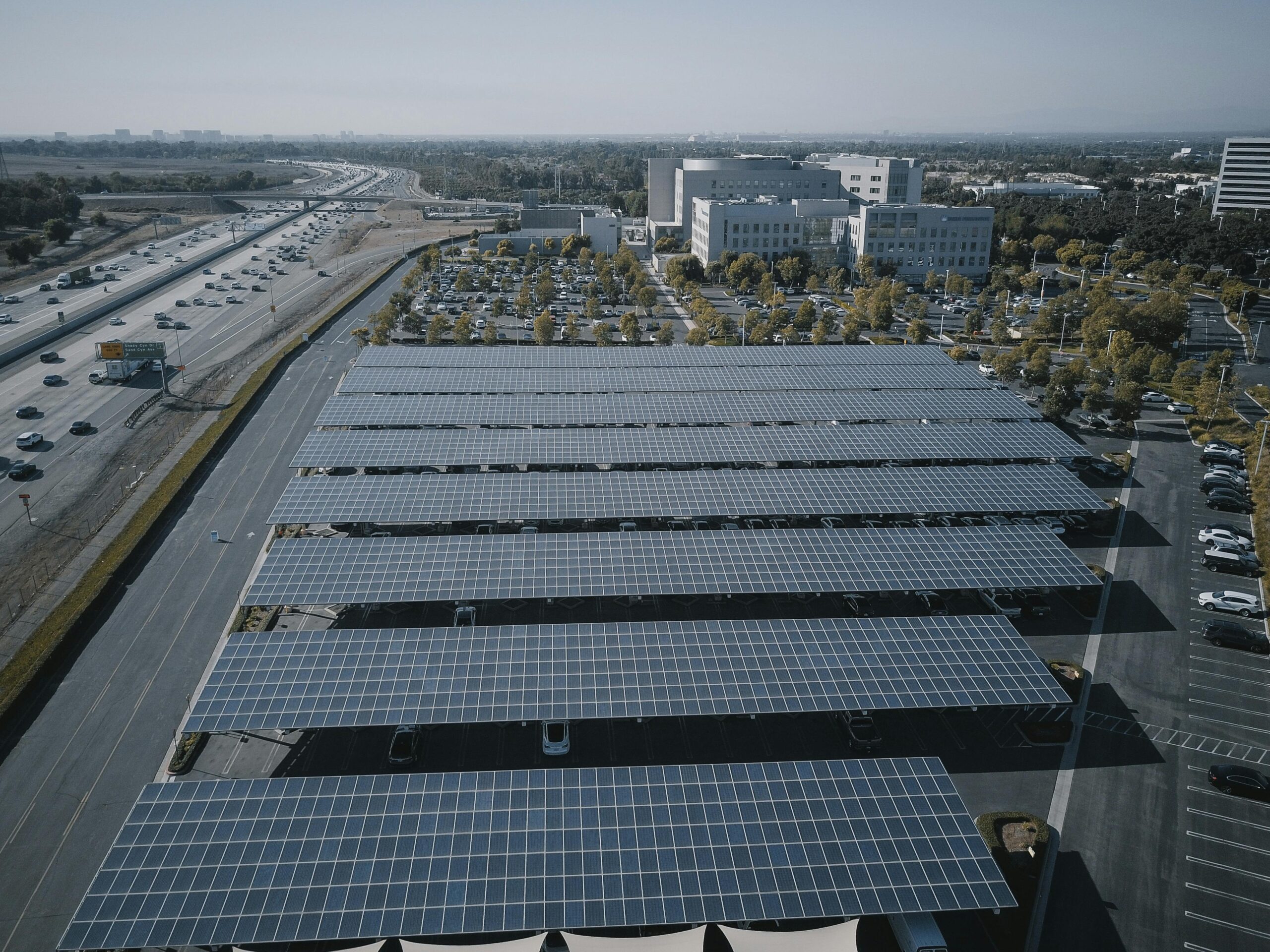Urban landscapes are transforming at lightning speed, and 5G technology stands at the forefront of this remarkable revolution, promising to reshape how we interact with our cities forever.
🌆 The Dawn of Hyperconnected Cities
The fifth generation of wireless technology represents far more than just faster download speeds on our smartphones. It’s a fundamental shift in how urban infrastructure communicates, responds, and serves millions of residents simultaneously. With latency rates dropping to mere milliseconds and bandwidth capabilities expanding exponentially, 5G networks create an invisible nervous system throughout metropolitan areas, enabling real-time data processing and instantaneous communication between devices, sensors, and control systems.
Cities worldwide are already witnessing the early stages of this transformation. From Seoul to Singapore, Barcelona to Beijing, municipal governments are partnering with telecommunications providers to deploy comprehensive 5G networks that promise to deliver unprecedented connectivity. These networks don’t just improve existing services—they make entirely new categories of urban innovation possible.
The implications extend far beyond entertainment and commerce. Emergency response systems, traffic management, environmental monitoring, and public safety infrastructure all stand to benefit from the massive improvements in speed, reliability, and capacity that 5G technology provides. This isn’t merely an upgrade; it’s a complete reimagining of what’s possible in urban environments.
🚦 Intelligent Transportation Systems Taking the Lead
Perhaps nowhere is the impact of 5G more immediately visible than in urban transportation. Traditional traffic management systems rely on pre-programmed timers and limited sensor data, resulting in frustrating congestion and inefficient traffic flow. Fifth-generation networks enable something dramatically different: truly intelligent transportation ecosystems that adapt in real-time to changing conditions.
Connected vehicles communicate directly with traffic signals, parking systems, and other vehicles, creating a coordinated dance of movement throughout city streets. When an ambulance needs to reach a hospital urgently, 5G-enabled systems can automatically adjust traffic lights along its route, ensuring the fastest possible journey while minimizing disruption to other traffic. This level of coordination was technically impossible with previous generation networks due to latency constraints.
Vehicle-to-Everything Communication Becomes Reality
The automotive industry refers to this as V2X (Vehicle-to-Everything) communication, and it requires the ultra-low latency that only 5G can provide. When a car’s sensors detect sudden braking, that information can be instantly transmitted to surrounding vehicles, giving drivers precious additional seconds to react. Similarly, pedestrians carrying 5G-enabled smartphones can be detected by approaching vehicles, dramatically reducing accident risks at crosswalks and intersections.
Public transportation systems benefit equally from these advances. Bus networks can optimize routes dynamically based on real-time passenger demand, weather conditions, and traffic patterns. Commuters receive accurate, up-to-the-second arrival predictions, transforming the often frustrating experience of waiting for public transit into something predictable and manageable.
⚡ Smart Energy Grids Powering Sustainable Cities
Energy consumption in urban areas accounts for a substantial portion of global carbon emissions, making efficient power distribution critical for environmental sustainability. 5G technology enables smart grid systems that monitor and adjust energy flow with unprecedented precision, balancing supply and demand in real-time across thousands of connection points.
Traditional electrical grids operate on a relatively simple model: power plants generate electricity, which flows through transmission lines to consumers. Smart grids enabled by 5G transform this into a dynamic, bidirectional network where solar panels on residential roofs, electric vehicle batteries, and utility-scale storage facilities all interact seamlessly, buying and selling power as conditions warrant.
During peak sunshine hours, neighborhoods with extensive solar installations can automatically feed excess power back into the grid, reducing strain on traditional power plants. When storm clouds roll in and solar production drops, the system instantly compensates by drawing from battery storage or ramping up conventional generation. All of this happens automatically, orchestrated by artificial intelligence systems that rely on 5G connectivity to process vast amounts of sensor data in milliseconds.
Buildings That Think and Adapt
Individual buildings become active participants in this energy ecosystem. Commercial towers equipped with 5G-connected sensors monitor occupancy, temperature, natural light levels, and energy prices, continuously optimizing heating, cooling, and lighting systems. When electricity prices spike during periods of high demand, smart buildings can automatically reduce non-essential energy consumption, lowering costs while supporting grid stability.
This level of optimization extends to residential areas as well. Smart thermostats, appliances, and home energy management systems coordinate their operation based on real-time grid conditions and pricing, significantly reducing both costs and environmental impact without requiring constant manual intervention from homeowners.
🏥 Healthcare Services Expanding Beyond Hospital Walls
The healthcare implications of 5G technology in urban environments are profound and potentially life-saving. Telemedicine has existed for years, but bandwidth and latency limitations have constrained its applications. With 5G, remote medical consultations can include high-definition video, real-time diagnostic equipment readings, and even remote-controlled medical procedures performed by specialist surgeons located hundreds or thousands of miles away.
Wearable health monitoring devices become dramatically more useful when connected to 5G networks. Patients with chronic conditions like diabetes or heart disease can have their vital signs continuously monitored, with any concerning changes immediately flagged for medical review. This shift from reactive to proactive healthcare has the potential to reduce emergency room visits, prevent medical crises before they occur, and dramatically improve quality of life for millions of people.
Emergency Response Reimagined
When medical emergencies do occur, 5G-enabled systems revolutionize emergency response. Ambulance crews can transmit detailed patient data, including high-resolution imaging and vital sign monitoring, to emergency room teams before the patient even arrives. Hospitals can prepare specific treatments, assemble specialized teams, and ready operating rooms based on this advance information, potentially saving crucial minutes that make the difference between life and death.
Augmented reality systems, which require the low latency that 5G provides, can guide first responders through complex medical procedures in the field, with remote specialists providing real-time visual instructions overlaid on the responder’s field of view. This technology effectively extends expert medical knowledge to every corner of a city, regardless of physical distance from major medical centers.
🛡️ Enhanced Public Safety and Security Systems
Urban safety infrastructure undergoes a fundamental transformation with 5G deployment. Traditional security camera systems record footage that’s reviewed after incidents occur. Next-generation systems powered by 5G and artificial intelligence can analyze video feeds in real-time, identifying potential threats, recognizing faces of missing persons, detecting abandoned packages, or spotting unusual behavior patterns that might indicate criminal activity or safety hazards.
This isn’t about creating surveillance dystopias, but rather about deploying technology thoughtfully to enhance genuine security while respecting privacy rights. Properly implemented systems can alert authorities to fires, medical emergencies, or accidents the moment they occur, dramatically reducing response times when seconds matter most.
Coordinated Emergency Management
During natural disasters, terrorist attacks, or major accidents, the coordination capabilities enabled by 5G networks become invaluable. Emergency services across multiple jurisdictions can share real-time information seamlessly, coordinate resource deployment efficiently, and communicate directly with affected populations through location-targeted alerts and instructions.
Drone networks, which require robust 5G connectivity to operate effectively in urban environments, can rapidly assess disaster situations, locate trapped individuals, deliver emergency supplies to isolated areas, and provide continuous situational awareness to command centers coordinating response efforts.
🌱 Environmental Monitoring Creating Healthier Cities
Air quality, noise pollution, water quality, and temperature variations significantly impact urban residents’ health and quality of life. Fifth-generation networks enable deployment of comprehensive sensor networks that monitor these environmental factors continuously across entire metropolitan areas, creating detailed, real-time maps of environmental conditions.
This granular data empowers both authorities and individuals to make informed decisions. City planners can identify pollution hotspots and take targeted remediation actions. Residents with respiratory conditions can check air quality conditions along their intended routes and choose healthier alternatives. Parks departments can optimize irrigation systems based on precise soil moisture readings, conserving water while maintaining green spaces.
Climate Adaptation Strategies
As urban areas confront the realities of climate change, 5G-enabled monitoring systems help cities adapt and respond to extreme weather events more effectively. Flood sensors throughout stormwater systems provide early warnings of potential flooding, allowing authorities to implement emergency measures and warn affected residents before water levels become dangerous.
Urban heat island effects, which make cities significantly hotter than surrounding rural areas, can be mapped and mitigated through strategic deployment of green infrastructure guided by detailed temperature monitoring data. This creates more livable urban environments while reducing energy consumption for cooling.
🎯 Overcoming Implementation Challenges
Despite the enormous potential of 5G technology for urban services, significant challenges remain. Infrastructure deployment requires substantial investment in new equipment, fiber optic backhaul connections, and small cell installations throughout cities. Unlike previous generation cellular networks, which relied on large towers covering wide areas, 5G requires denser networks of smaller transmitters to deliver its promised performance.
This physical infrastructure must navigate complex regulatory environments, historic preservation concerns in older urban areas, and aesthetic objections from residents who don’t want new equipment visible in their neighborhoods. Successfully deploying 5G requires careful community engagement, thoughtful design that minimizes visual impact, and regulatory frameworks that balance legitimate concerns with the broader public benefits of improved connectivity.
Digital Equity Considerations
Ensuring that 5G benefits reach all urban residents, not just wealthy neighborhoods, represents a critical equity challenge. Without deliberate policy interventions, market forces might lead telecommunications providers to prioritize deployment in high-income areas where revenue potential is greatest, potentially exacerbating existing digital divides.
Progressive cities are addressing this through regulatory requirements that condition 5G deployment permits on commitments to serve underserved communities, through public-private partnerships that subsidize infrastructure in low-income neighborhoods, and through municipal broadband initiatives that ensure universal access to next-generation connectivity.

🚀 The Path Forward for Connected Cities
The transformation of urban services through 5G technology is not a distant future scenario—it’s happening now in cities around the world. Early adopters are already demonstrating the tangible benefits of enhanced connectivity, from reduced traffic congestion to improved emergency response times, lower energy consumption, and better health outcomes.
As deployment accelerates over the coming years, the full potential of 5G-enabled urban services will become increasingly apparent. Cities that embrace this technology thoughtfully, with attention to equity, privacy, and sustainability, will find themselves better positioned to address the complex challenges of 21st-century urban life.
The revolution in urban living isn’t just about technology for its own sake—it’s about leveraging connectivity to create cities that are more efficient, sustainable, livable, and responsive to residents’ needs. Fifth-generation wireless networks provide the foundation for this transformation, but realizing their full potential requires vision, investment, and commitment from public and private sector leaders alike.
For urban residents, the promise is compelling: cities that work better, respond faster, consume less energy, and provide higher quality services to everyone. The technical capabilities of 5G make these improvements possible; human ingenuity and determination will make them real.
Toni Santos is an urban innovation writer and researcher dedicated to exploring how technology, sustainability, and design are reshaping the cities of tomorrow. With a deep interest in smart infrastructure and human-centered development, Toni studies how data-driven systems and green technologies can create more livable, resilient, and efficient urban environments. Fascinated by sustainable architecture, IoT integration, and next-generation mobility, Toni’s work connects environmental awareness with digital transformation. Through research and storytelling, he examines how intelligent planning and renewable innovation can redefine the relationship between people and their cities. Blending urban design, environmental science, and systems thinking, Toni documents the breakthroughs that are reimagining how we build, move, and coexist. His work highlights the architects, engineers, and technologists leading the charge toward smarter, greener futures. His work is a tribute to: Green architecture as the foundation for sustainable living IoT innovation shaping the infrastructure of connected cities Mobility systems and renewable energy driving urban transformation Whether you’re an architect, engineer, or city planner, Toni Santos invites you to explore the technologies and ideas building the smart, sustainable cities of the future — one street, one system, one vision at a time.




